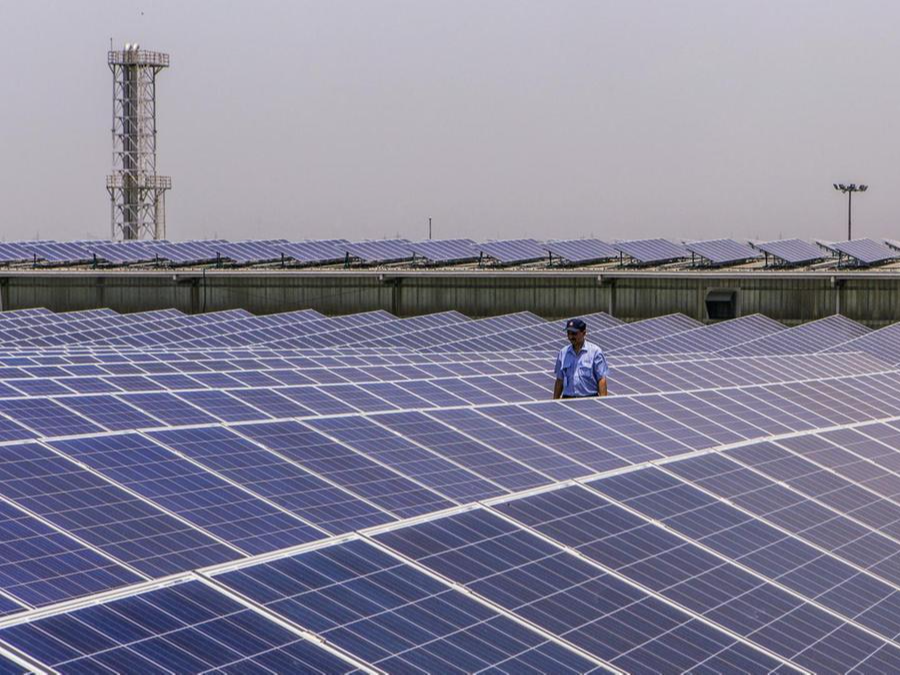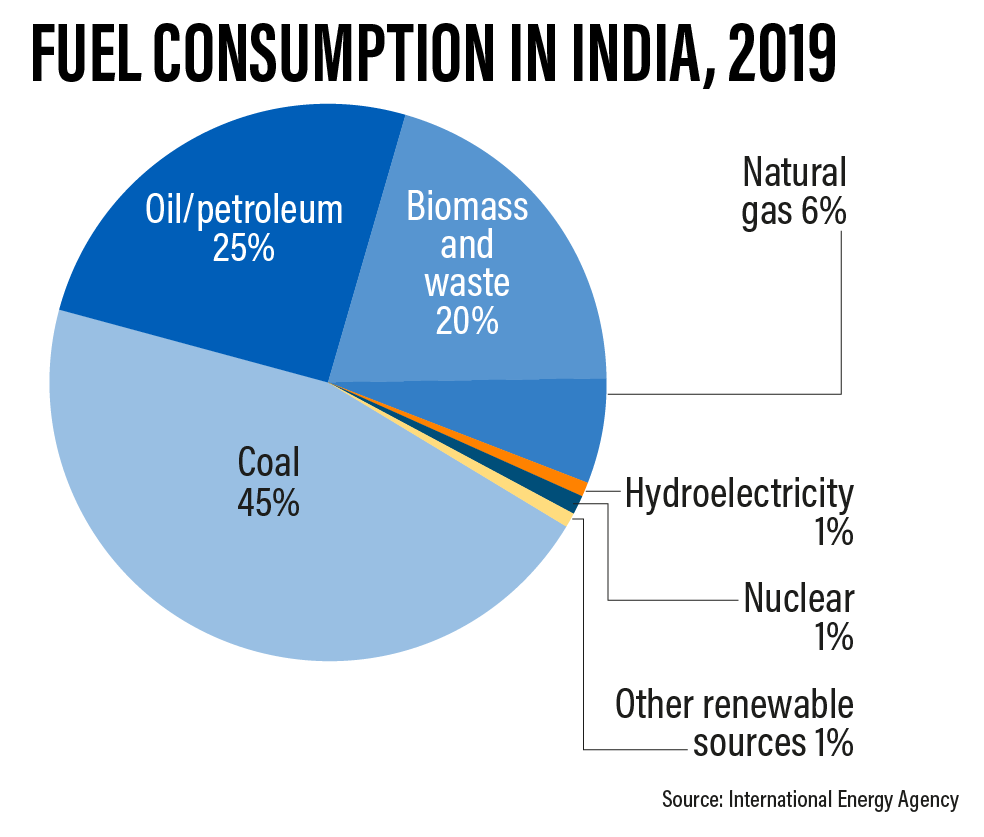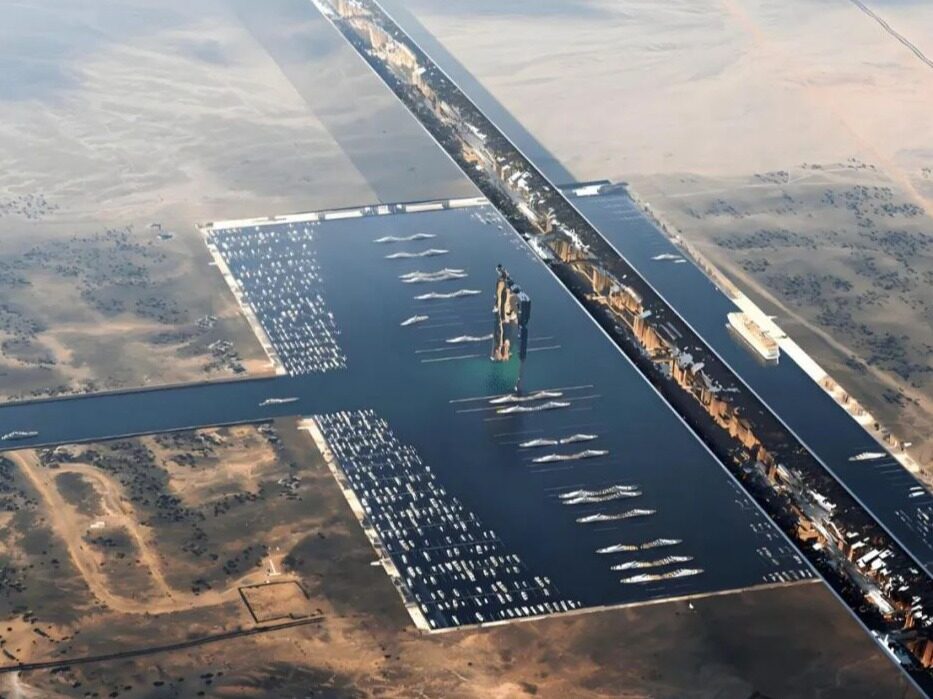- In the next ten years, India will use non-fossil fuels to generate 40% of its electricity

According to industry insiders, India’s renewable energy industry will continue to exert strength because investors hope to take advantage of the industry’s huge growth potential, thanks to record low solar prices and demand growth, which will double demand by 2040.
Although there are various challenges, including project delays due to the pandemic, and persistent problems, such as difficulties in the power supply sector and difficulty in obtaining land, if these problems are resolved, it may bring difficulties to this sector in Asia’s third largest economy. To bring greater impetus.
"India is one of the world's largest renewable energy markets and is attractive to large investors," said Vinod Kala, founder of renewable energy consulting firm Emergent Ventures and general partner of the Energy Impact Fund. "Despite some challenges, the investment environment is still very positive."
India is one of the largest and most promising renewable energy markets in the world
The Indian government’s goal is to nearly double its renewable energy power generation capacity by 2022 and five times its renewable energy power generation capacity to 450 GW by 2030. The Indian government also promised that, in accordance with the Paris climate change agreement, in the next ten years, India will use non-fossil fuels to generate 40% of its electricity.
In addition to reducing carbon emissions, increasing the use of renewable energy is also critical to meeting India’s growing energy demand, improving energy security and reducing dependence on expensive oil and coal imports. The country is the third largest energy consumer in the world, and coal accounts for most of it, accounting for 45%. According to the International Energy Agency, India is also the third largest consumer of oil, with oil and other liquids accounting for 25% of energy consumption. India is the third-largest emitter of greenhouse gases, the fourth-largest refiner and net exporter of refined oil.
As India strives to increase the role of green energy such as solar and wind energy, investors are looking at more opportunities in the market.
"Domestic and global institutions in finance, business, energy, utilities, and government are all ready to deploy a capital wall, and India needs funds to fund its ambitious renewable energy goals," said the research director of South Asia Energy Finance. Tim Buckley (Tim Buckley) Institute of Energy Economics and Financial Analysis (IEEFA) said in a report released last week.
According to data from the Institute of Energy Economics and Financial Analysis, since 2014, India has injected more than 42 billion U.S. dollars of investment in the field of renewable energy. The country will need to invest another 500 billion U.S. dollars to achieve the 450GW target by 2030.
Andrew Hines, co-founder and chief commercial officer of CleanMax (renewable energy), an energy company in Mumbai, said, “Due to the scale and the abundance of wind energy, especially solar energy, India is the world’s largest and most promising company. One of the renewable energy markets." The company also operates in the UAE.
However, the impact of the pandemic has dealt a heavy blow to the development of the non-fossil fuel industry in India, causing some planned solar and wind energy projects to be shelved.
According to a report by the renewable energy consulting company Bridge to India, India’s total solar and wind power generation capacity will be 4,908 megawatts by 2020, the lowest in the past five years. The data shows that utility-scale solar and wind power generation have dropped by 60% and 40% respectively from the previous year.

A truck loaded with coal bursts into flames at a steel plant in India. Coal remains India’s main fuel source and will provide nearly half of its electricity by 2019
The report said this was due to financial and operational challenges following the country’s strict lockdown, including labor and equipment shortages, and delays in obtaining government approvals.
Investor confidence is strong
Last month, French oil giant Total invested US$2.5 billion in India’s Adani Green Energy to buy 20% of the company and 50% of its solar portfolio.
Patrick Pujane, Chairman and CEO of Total, said: “Given the size of the market, India is the right place to put into practice our energy transition strategy based on two pillars: renewable energy and natural gas.”
Mr. Buckley said that the Institute of Energy Economics and Financial Analysis expects that “as electricity demand continues to recover before 2021, global investors will accelerate capital deployment”.
The report of the Institute of Energy Economics and Financial Analysis pointed out that in addition to new funds, India’s green energy projects also need to be refinanced. These funds come from private equity, sovereign wealth funds, oil and gas companies, and global pension and infrastructure funds.

The Canadian Pension Plan Investment Board and Petronas are among the global companies that have invested heavily in India’s renewable energy industry.
Experts say that low interest rates and lower solar tariffs will stimulate the competitiveness of renewable energy, thereby stimulating investor demand.
Mr. Hines said: "Wind energy and solar energy are now one of the cheapest methods of power generation currently available, which makes renewable energy very attractive."
Hero Future Energies chairman and managing director Rahul Munjal (Rahul Munjal) believes that after a weak 2020, India will usher in a wave of business opportunities. This renewable energy developer is located in New Delhi and received investment from Masdar, Abu Dhabi in November 2019.
Mr. Munjal said: “Since India has just emerged from the lowest solar installed capacity growth in the past five years for a year, there is still a lot of work to be done in the industry.” “I expect large-scale public utility tenders by state and central governments will surge.” He Said, but there are some obstacles that need to be removed in order to maximize the potential of the renewable energy sector.
Mr. Munjal said: “India has an ambitious renewable energy goal. To achieve this goal, certain policy, financial and technical constraints must be addressed. The grid must also be upgraded to allow unimpeded penetration of renewable energy. This involves setting up transmission lines in new areas and fast-tracking green energy corridors. As the growth of renewable energy requires a lot of land, major land reforms must also be undertaken.
Mr. Munjal also hopes to carry out a comprehensive reform of the state-led power sector. "We will have to reconsider the viability of power companies. Privatization is the way forward."
Some solar and wind energy developers have reported the challenges posed by delayed payments by distribution companies. Andhra Pradesh’s sudden decision in 2019 to renegotiate renewable energy purchase power contracts has angered developers and investors.
Mr. Kara said: "The rapid decline in renewable energy prices has caused some utilities to get into trouble because the old tariffs are high compared to those found in recent bids."
Potential benefits outweigh risks
Viswanatha Prasad, managing director and founder of Indian investment company Caspian Debt, said: “We have been committed to supporting green small and medium-sized enterprises and start-ups that provide innovative climate solutions, or those in Companies that play a key role in industry deployment and expansion."
"We are impact investors. The purpose of our investment is to obtain financial returns and at the same time support entrepreneurs to build a better world. Climate and sustainability are one of the core investment themes of the fund."
But Ashvin Patil, the head of the Biofuels Consortium, explained that the biggest impetus for India’s renewable energy industry will come from greater push by companies and authorities to keep it away from the use of polluting energy.
According to the International Energy Agency, by improving energy efficiency, India can save about US$190 billion in energy imports every year by 2040 and avoid 875 terawatt-hours of power generation per year, which is almost half of India’s current annual power generation. "We believe that if the government strictly enforces pollution parameter restrictions, the renewable energy industry will be boosted," Patil said.Editor/Huang Lijun
Comment
 Praise
Praise
 Collect
Collect
 Comment
Comment
 Search
Search














Write something~